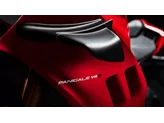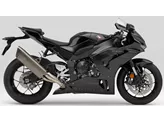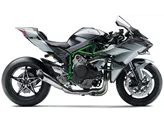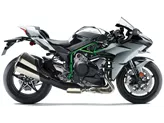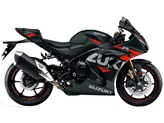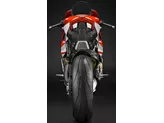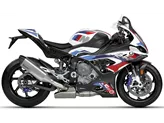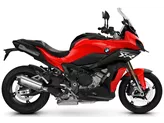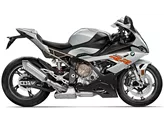BMW S 1000 RR 2020 vs. Kawasaki Ninja H2 2015

BMW S 1000 RR 2020

Kawasaki Ninja H2 2015
Pregled - BMW S 1000 RR 2020 vs Kawasaki Ninja H2 2015
The BMW S 1000 RR 2020 and the Kawasaki Ninja H2 2015 are both powerful and high-performance supersport motorcycles. However, they have some differences in their technical specifications and strengths.
Starting with the technical specifications, both motorcycles have an inline engine type with four cylinders and four valves per cylinder. The BMW S 1000 RR has a larger displacement of 999cc compared to the Kawasaki Ninja H2's 998cc. The BMW also has a higher bore of 80mm compared to the Kawasaki's 76mm, while the Kawasaki has a longer stroke of 55mm compared to the BMW's 49.7mm.
In terms of engine power, the BMW S 1000 RR boasts 207 HP, while the Kawasaki Ninja H2 has 200 HP. The BMW also has a higher torque of 113 Nm compared to the Kawasaki's 133.5 Nm. However, the Kawasaki has a lower compression ratio of 8.5, indicating a lower level of engine efficiency compared to the BMW's 13.3 compression ratio.
Both motorcycles have adjustable front and rear suspensions, allowing riders to fine-tune their riding experience. The BMW S 1000 RR features an upside-down telescopic fork for the front suspension, while the Kawasaki Ninja H2 has a telescopic fork. The BMW also has a swing arm rear suspension, while the Kawasaki has a single swing arm.

BMW S 1000 RR 2020
In terms of chassis, the BMW S 1000 RR has an aluminum frame with a twin-tube, load-bearing engine design. On the other hand, the Kawasaki Ninja H2 features a steel frame with a tubular design.
Both motorcycles have double disk brakes at the front with radial technology, providing excellent stopping power. They also have the same front tire width of 120mm and diameter of 17 inches. However, the Kawasaki Ninja H2 has a wider rear tire width of 200mm compared to the BMW S 1000 RR's 190mm. Both motorcycles have the same rear tire diameter of 17 inches.
In terms of dimensions and weights, the Kawasaki Ninja H2 has a slightly longer wheelbase of 1455mm compared to the BMW S 1000 RR's 1441mm. The seat height is also similar, with the Kawasaki at 825mm and the BMW at 824mm. However, the Kawasaki Ninja H2 is significantly heavier with a kerb weight of 238kg compared to the BMW S 1000 RR's 197kg. The Kawasaki also has a slightly larger fuel tank capacity of 17 liters compared to the BMW's 16.5 liters.

Kawasaki Ninja H2 2015
Moving on to the strengths of each motorcycle, the BMW S 1000 RR 2020 is praised for its very linear power delivery, wide rev range, and pleasant control. It also features the ShiftCam technology, providing plenty of pressure in the lower rev range. The BMW has an excellent DDC (Dynamic Damping Control) system, offering precision and top performance. It also has a superb electronics package and is considered a harmonious overall package both on the road and on the racetrack.
On the other hand, the Kawasaki Ninja H2 2015 is known for its outstanding build quality and its fascinating engine with a mechanical turbocharger. It offers exceptional pull, acceleration, and speed on a completely new level. The narrow seat ensures safe standing, even for smaller riders, and the motorcycle inspires a lot of confidence despite its high performance. The Kawasaki also features strong brakes and high-quality details.
However, both motorcycles have their weaknesses. The BMW S 1000 RR 2020 is criticized for being somewhat "characterless" compared to other competitors like Aprilia and Honda. It also lags behind on the spec sheet in direct comparison. On the other hand, the Kawasaki Ninja H2 2015 has some issues with its response behavior in the transition from pushing mode to acceleration phase, which is not at the level of "normal" motorcycles. It also experiences understeer in fast bends, and taller riders above 185cm may have difficulty integrating their feet into the overall aerodynamic concept.
In conclusion, the BMW S 1000 RR 2020 and the Kawasaki Ninja H2 2015 are both powerful and high-performance supersport motorcycles with their own strengths and weaknesses. The BMW offers a more controllable and precise riding experience, while the Kawasaki provides exceptional speed and acceleration. Ultimately, the choice between the two will depend on the rider's preferences and priorities.
Tehnične specifikacije BMW S 1000 RR 2020 v primerjavi z Kawasaki Ninja H2 2015
Primerjava prednosti in slabosti
Primerjava prednosti in slabosti
BMW S 1000 RR 2020
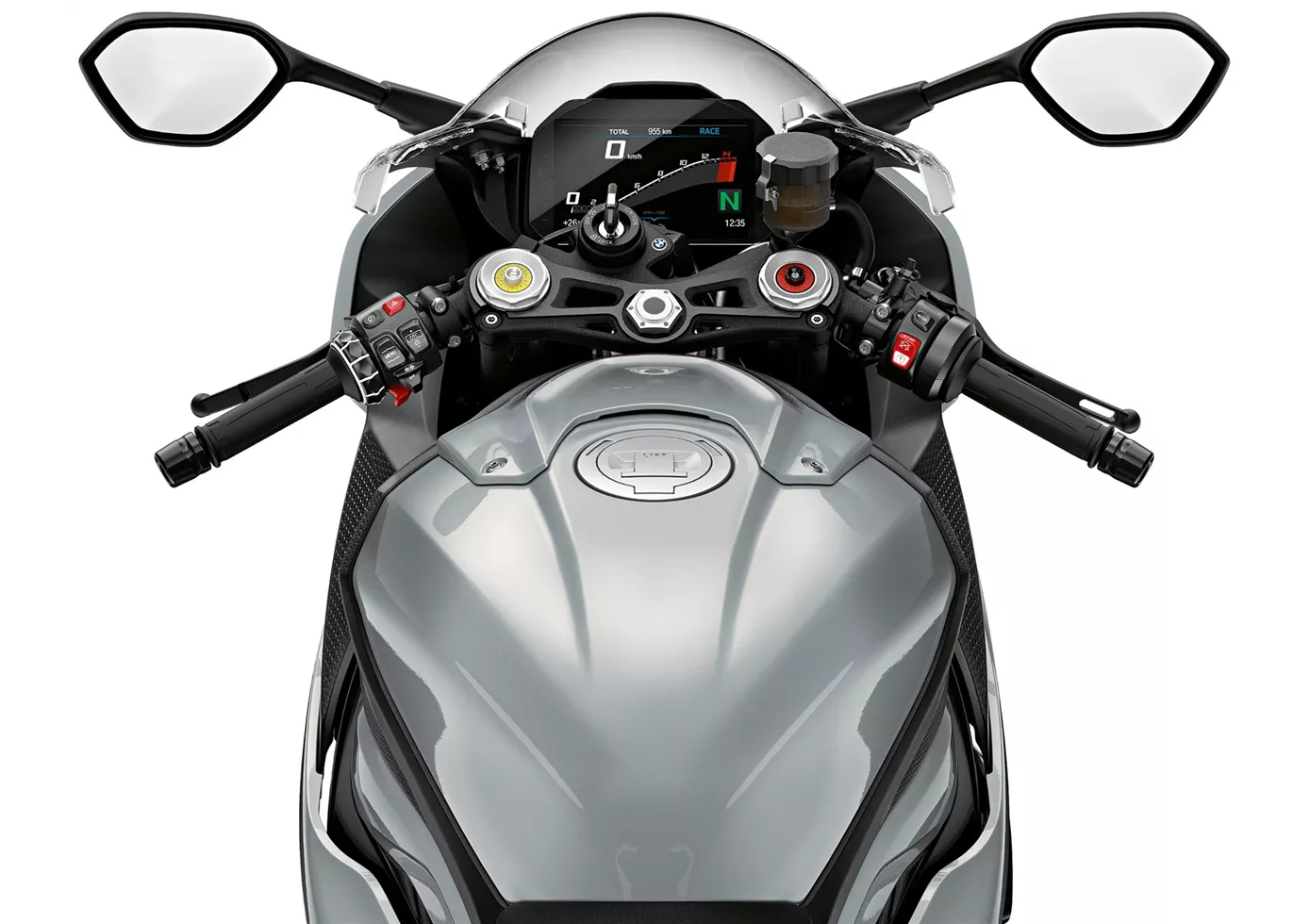
Pravi vsestranski superbike. BMW zna izkoristiti svoje prednosti tako na dirkališču kot na podeželski cesti. Zaradi spremenljivega krmiljenja odmične gredi je zmogljiv motor prepričljiv že v spodnjem delu in harmonično pospešuje v celotnem območju vrtljajev, z veliko moči v vsakem območju. Za ljubiteljskega pilota podvozje vsekakor odlično deluje v vsaki situaciji, zagotavlja pregledne povratne informacije in ponuja številne možnosti nastavitev. Položaj sedenja je športen, a hkrati razmeroma udoben. Elektronika deluje zelo harmonično, ne da bi se pri tem ukvarjala z voznikom - TOP!
Kawasaki Ninja H2 2015

Ninja H2 predstavlja mejnik v zgodovini motociklov. Ni le poln elektronskih inovacij, temveč ponuja tudi popolnoma nove tehnologije v smislu konstrukcije motorja in mehanike. Ta visokotehnološki raziskovalni objekt japonskega tehnološkega podjetja je dejansko naprodaj in ga je mogoče tudi voziti. V bistvu se vozi kot običajen motocikel, le da ima bistveno večjo moč. Na začetku je odzivnost motorja izziv, vendar bodo ljubitelji hitrosti našli način za vožnjo in uživanje v tem fascinantnem motornem kolesu.
Primerjava povprečnih tržnih cen BMW S 1000 RR vs Kawasaki Ninja H2
There are a few key differences between a BMW S 1000 RR 2020 and a Kawasaki Ninja H2 2015. In terms of price, the actual average price of a Kawasaki Ninja H2 2015 is about 21% higher. A BMW S 1000 RR 2020 experiences a loss of 430 USD in one year and 140 USD in two years of ownership. This is offset by a loss of 6,020 USD and 5,130 USD for a Kawasaki Ninja H2 2015. Compared to Kawasaki Ninja H2 2015 there are more BMW S 1000 RR 2020 bikes available on the 1000PS.de Marketplace, specifically 16 compared to 4. It takes less time to sell a BMW S 1000 RR with 68 days compared to 153 days for a Kawasaki Ninja H2. Since model year 2010 1000PS.de editors have written 135 reviews for the BMW S 1000 RR and 27 reviews for the Kawasaki Ninja H2 since model year 2015. The first review for the BMW S 1000 RR was published on 4/16/2008 and now has more than 4,000 views. This compares to more than 5,600 views for the first review on Kawasaki Ninja H2 published on 8/31/2014.


